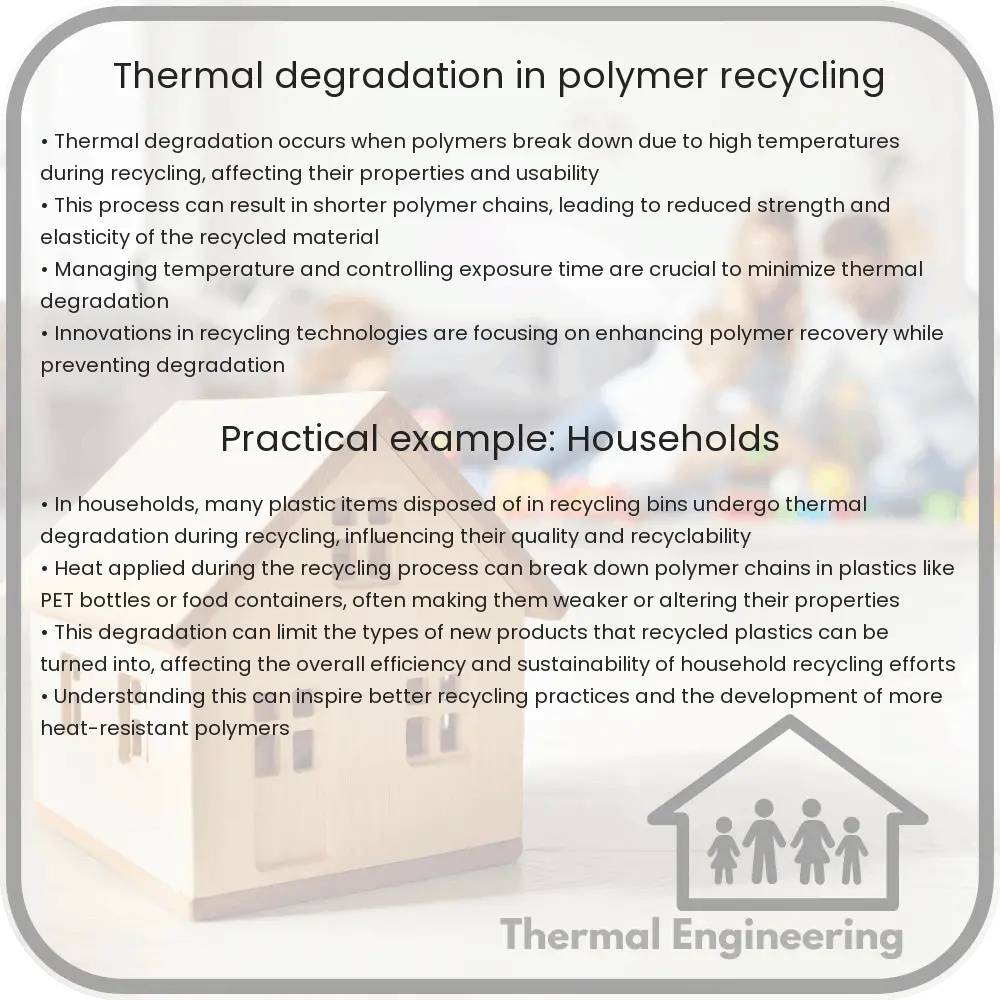Explore the effects and management of thermal degradation in polymer recycling to enhance process efficiency and material quality.

Understanding Thermal Degradation in Polymer Recycling
Thermal degradation is a vital factor to consider in the recycling of polymers, impacting both the process efficiency and the quality of recycled materials. As interest in sustainable materials grows, understanding this phenomenon becomes crucial for optimizing recycling technologies and promoting environmental sustainability.
What is Thermal Degradation?
Thermal degradation is the process where polymer chains break down due to high temperatures. It typically results in a reduction of molecular weight and can alter the physical properties of polymers, making them brittle or changing their color. This degradation mainly affects thermoplastic polymers, such as polyethylene (PE), polypropylene (PP), and polystyrene (PS), which are common in consumer products.
The Chemistry Behind Thermal Degradation
The primary mechanism of thermal degradation in polymers involves the cleavage of covalent bonds in the presence of heat. The process can proceed via random chain scission, where bonds within the polymer backbone break randomly, or by depolymerization, where monomers are released from the ends of the polymer chain.
For example, the thermal degradation of polyethylene can be represented by the equation:
[-CH2-CH2-]n -> n CH2 = CH2This simplification shows the breakdown of polyethylene into ethylene monomers, which is a form of depolymerization.
Factors Influencing Thermal Degradation
- Temperature: The higher the temperature, the faster the rate of degradation. Each polymer has a specific degradation temperature range.
- Presence of oxygen: Oxygen can accelerate the degradation process through oxidative reactions, further breaking down the polymer chains.
- Polymer structure: The susceptibility of polymers to thermal degradation depends on their molecular structure. Linear polymers tend to degrade more easily compared to cross-linked polymers.
Impact on Recycling
Thermal degradation affects the efficiency and the outcome of the recycling process. Degraded materials often exhibit poorer physical properties, which limits their applicability in high-quality or engineering-grade applications. Thus, controlling the degradation process is crucial to maintaining the utility of recycled polymers.
Strategies to Minimize Thermal Degradation
- Temperature Control: Careful control of the temperature during the mechanical recycling process helps minimize exposure to excessive heat.
- Stabilizers: Adding stabilizers such as antioxidants can help protect the polymers from thermal and oxidative degradation.
- Improved Design: Engineering the recycling process, such as shortening exposure times to heat and oxygen, can significantly reduce the occurrence of degradation.
In conclusion, understanding and managing thermal degradation is essential for the development of efficient and sustainable polymer recycling processes. By minimizing degradation, we can promote the reuse of materials and reduce environmental impact, aligning with global sustainability goals.